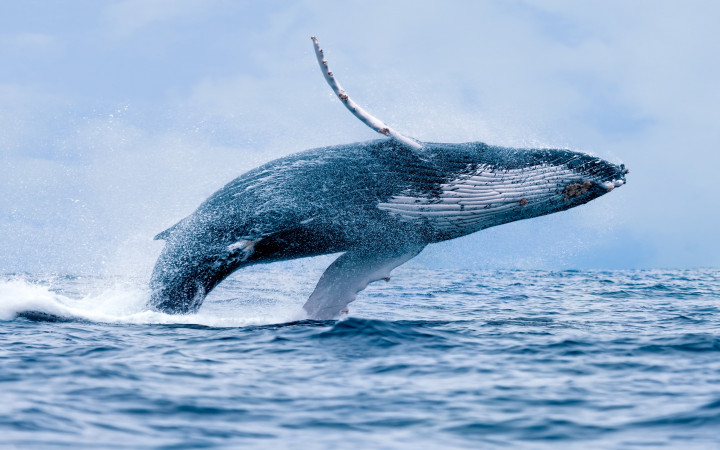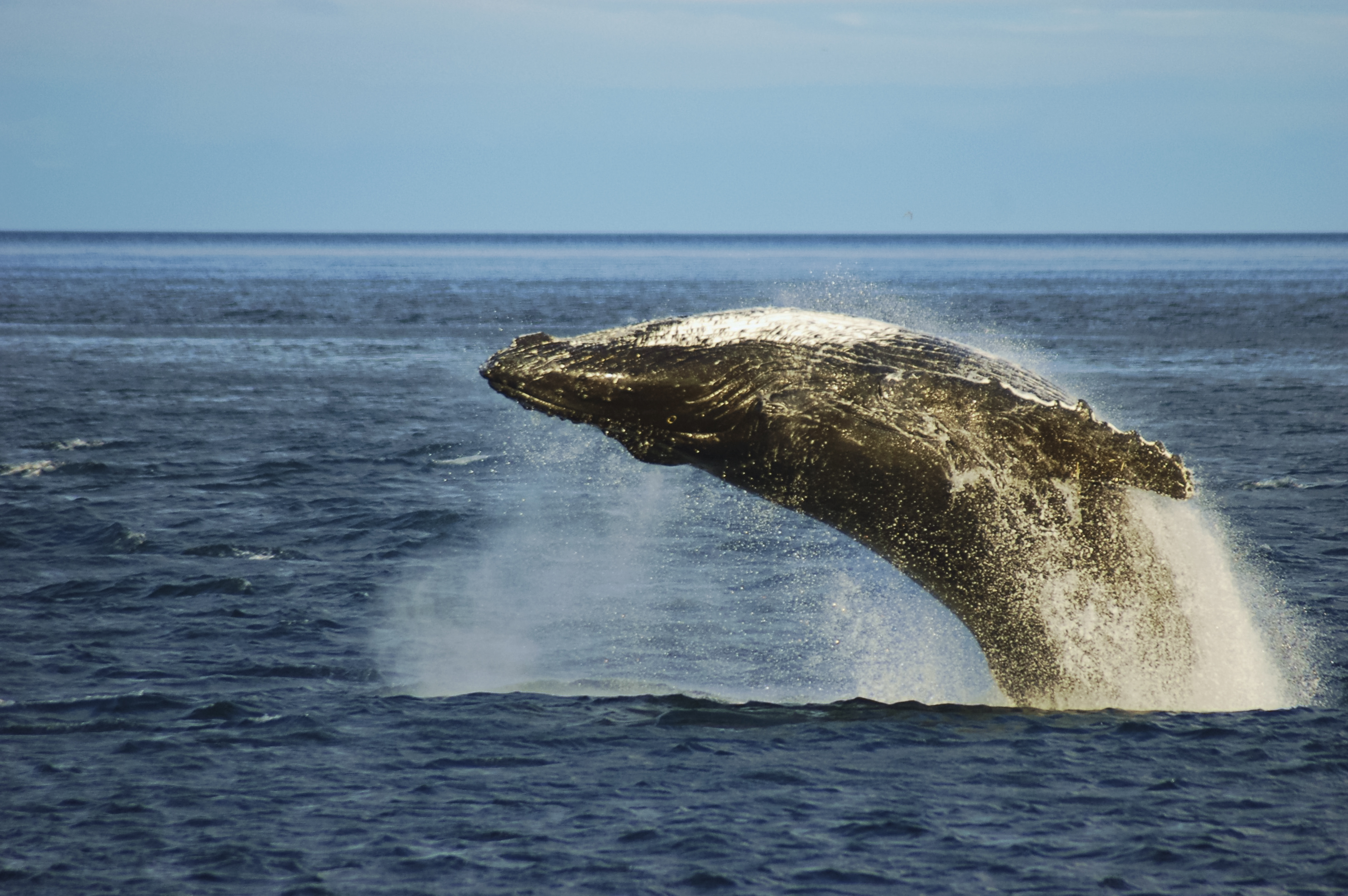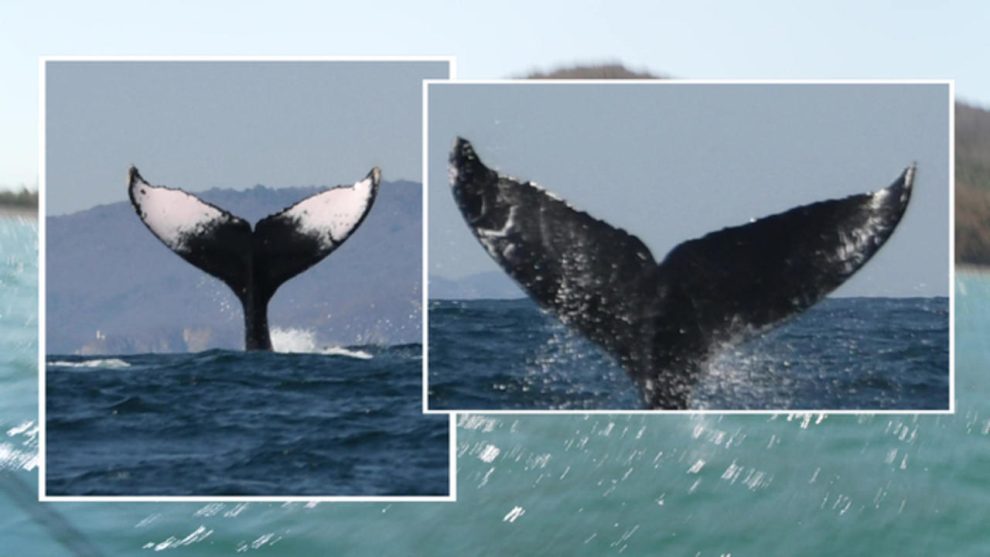A recent study published in Royal Society Open Science has revealed a disturbing discovery: the deaths of over 7,000 humpback whales in the North Pacific Ocean between 2012 and 2021. This staggering number represents a significant 20% decline in the population over just a decade.

The Findings: A Devastating Impact on Marine Life
The study’s findings highlight the devastating impact that climate change can have on marine ecosystems and species. The sharp decline in the North Pacific humpback whale population is attributed to a prolonged marine heatwave that began in 2013 and disrupted the whales’ food supply. With less prey available, the whales struggled to find mates and successfully raise their young, leading to plummeting numbers.
The researchers were able to quantify the shocking population loss through an innovative approach: artificial intelligence. They developed an AI system to analyze over 204,000 images of individual humpback whales, enabling far more accurate whale tracking and death identification than traditional survey methods. The power of AI unlocked vital population insights that can inform conservation efforts.
The Vital Role of Humpback Whales
As an iconic whale species, humpbacks play a vital ecological role in the ocean. Their presence helps maintain balance in the marine food web. As large filter feeders, they regulate fish populations while also serving as prey for killer whales. Additionally, the nutrient-rich fecal matter they produce helps fertilize tiny ocean plants that absorb carbon dioxide from the atmosphere.
The precipitous decline of North Pacific humpback whales threatens to destabilize the broader ecosystem. Their smaller numbers can impact other species up and down the food chain. It also means less carbon dioxide being absorbed by ocean plants—a concerning impact on climate. Preserving humpbacks is key for a healthy ocean.
The Marine Heatwave’s Catalyzing Impact
The underlying cause of the humpback whale die-off comes down to climate change. More specifically, experts cite the warmer-than-usual seawater temperatures of a marine heatwave lasting from 2013 to 2016 as the catalyst.
This prolonged period of unusually high ocean temperatures wreaked havoc on the marine food web. The warmer waters held less nutrition and plankton that humpbacks feed on. Female whales were less able to successfully give birth and rear calves. Many whales starved or failed to reproduce, spurring the staggering die-off.

Marine heatwaves like this are Expected to grow more intense and frequent as climate change accelerates. This threatens more disruption of delicate ocean ecosystems if immediate action isn’t taken to curb emissions and warming.
Other Contributing Causes
While marine heatwaves may strike the biggest blow to humpbacks, the whales face other threats from human activity:
- Pollution – Toxins in seawater can build up in whale tissue and cause health issues
- Ocean noise – Loud sounds from ships and sonar disrupt whale communication and behavior
- Overfishing – Depletion of key prey species like anchovies and sardines
- Ship collisions – Boat and ship strikes are a leading cause of humpback injuries/deaths
These threats combine to compound pressure on the already vulnerable species. Minimizing these human impacts is crucial for enabling humpback recovery and resilience.
Conservation Concerns: Ecosystem Impacts
The sharp decline of North Pacific humpbacks raises alarm for conservationists—and the health of the broader marine ecosystem. If an anchoring species like humpbacks keeps falling, it can trigger a destabilizing ripple effect across connected species.
Scientists point to the interrelated nature of ocean life. For example, fewer humpbacks could mean increasing fish populations. But eventually those exploding fish numbers would hit limitations in the food chain. Population crashes would then impact other marine predators. Maintaining balance is key.
There are also climate impacts. The huge amounts of carbon stored in whale carcasses play a small but meaningful role in fighting climate change. Protecting whales helps maintain this oceanic carbon sink.
Economic Impacts on Whale Tourism
The decline of humpbacks threatens to deliver economic losses along coastlines as well. Whale watching tourism is a booming business, particularly across Hawaii, Mexico, California and Alaska. But fewer whales could mean fewer tourists.
One study estimated one living humpback whale to represent $2 million in ecotourism revenue over its lifetime. Cutting a population by 20% means far greater economic losses spread across local tour operators, hotels, restaurants and shops supported by visiting whale watchers.
Coastal communities benefit greatly from healthy and sustained whale populations. Preserving humpbacks is key for securing this unique inheritance.
Ethical Arguments for Protecting Marine Life
Beyond dollars, there is also an ethical argument for protecting humpbacks rooted in animal welfare and rights. As one of earth’s most intelligent creature, many believe whales deserve special protections from harm, regardless of their value to economies or ecosystems.
Whales possess sophisticated communication abilities, complex social structures, problem-solving capabilities, self-awareness and long-spanning emotional attachments to family members. Inflicting undue suffering or enabling extinction for such cognitively advanced beings presents troubling moral dilemmas.
Safeguarding the existence of whales, in all their complexity, can be viewed as an ethical obligation humanity owes equally to all inhabitants of planet Earth. There is an innate responsibility to steward life.
Solutions Start With Fighting Climate Change
Reversing the dangerous humpback whale population decline will necessitate reducing the threats driving it. While actions can target specific issues like whaling or pollution, experts agree the priority must be fighting climate change.
Mitigating greenhouse gas emissions, the root catalyst behind warming oceans and disrupted marine ecosystems, is the most direct action that can aid humpback recovery. Transitioning rapidly towards renewable energy across industries while protecting air, land and sea carbon sinks are key first steps world governments must take.
Similarly, protecting other whale species like the southern resident killer whales also rely on stemming climate impacts across the entire marine food chain. United global action is essential.
Further Steps We Can Take
In addition to addressing the climate crisis, other efforts can boost prospects for whale conservation:
- Reduce oceanic pollution from chemicals, toxins and plastics
- Establish additional Marine Protected Areas for whale habitats
- Enforce fishing regulations that prevent overexploitation of whale prey species
- Limit ocean noise pollution from seismic surveys and sonar activity
- Improve monitoring and warning systems to prevent whale-vessel collisions
- Support WWF, Greenpeace and other organizations spearheading conservation efforts
Protecting the wonder of whales and the health of all marine life requires sustained commitment across conservation, policymaking, industry and public engagement fronts. But the solutions start with urgent climate action.
Preserving Marine Life for Future Generations
The revelation of over 7,000 humpback whale deaths in the North Pacific serves as a chilling wake-up call to the growing threat climate change poses to ecosystem balances. It also offers an opportunity to reflect on humanity’s relationship to the natural world.
Can we transition our economic systems rapidly enough to curb emission impacts? Will political leaders unite behind scientific imperatives? For the sake of magnificent creatures like humpbacks, as well as our children’s future, we must meet this planetary crisis with boldness, compassion and resolve.
The coming decades will test the character of humankind like nothing before. But there is still hope we can change course to preserve the wonder of life in all its diversity—on sea, land and air. Now is the time for action.
















Add Comment